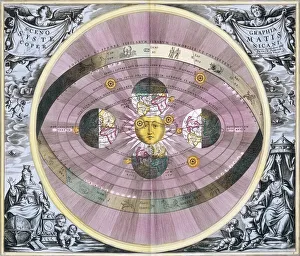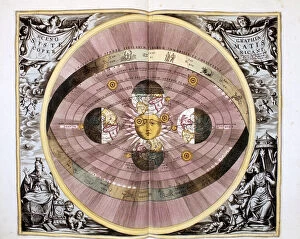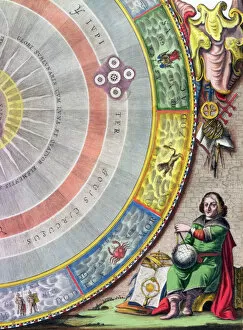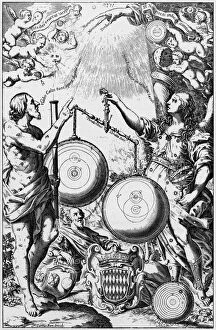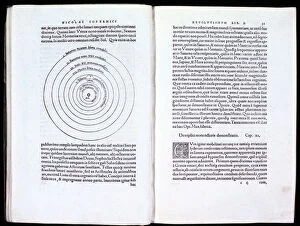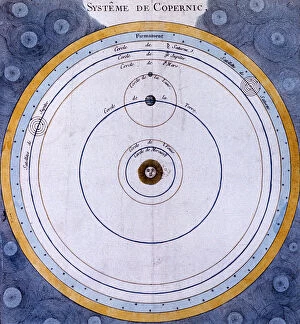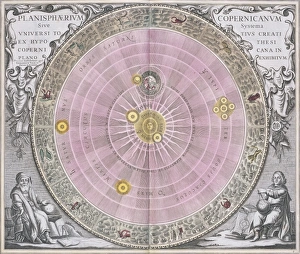Copernican System Collection
The Copernican system, also known as the heliocentric or Sun-centered system of the Universe, revolutionized our understanding of celestial bodies
All Professionally Made to Order for Quick Shipping
The Copernican system, also known as the heliocentric or Sun-centered system of the Universe, revolutionized our understanding of celestial bodies. Proposed by Nicolaus Copernicus, a Polish astronomer in 1543, this groundbreaking worldview challenged the prevailing belief that Earth was at the center of the cosmos. In 1660, Andreas Cellarius depicted the movements of Earth in relation to the sun in his engraving from Harmonia Macrocosmica. This representation visually captured Copernicus' revolutionary idea and showcased how our planet orbits around the central star. Galileo Galilei further championed this concept with his publication "Dialogue concerning two chief world systems" in 1632. The title page of this influential work highlighted both Ptolemaic and Copernican models side by side, emphasizing their stark differences. Andreas Osiander, a German Lutheran theologian from the 16th century, played a significant role in promoting Copernican ideas. His support helped pave the way for wider acceptance and understanding of this new cosmological perspective. Urania, often portrayed as Muse of Astronomy weighing and comparing various systems of the universe in artworks like "Urania Weighing Systems, " symbolizes humanity's quest for knowledge about our place within it all. Her presence represents how astronomers throughout history have critically examined different models to unravel cosmic mysteries. Over time, more scientific advancements reinforced and refined Copernicus' heliocentric model. In 1708 and again in 1761, publications reaffirmed its significance as they presented updated versions based on accumulating evidence. The legacy left behind by Nicolaus Copernicus continues to inspire scientists today. His De revolutionibus orbium coelestium published in 1543 remains an iconic milestone that forever changed our perception of space and paved the way for future astronomical discoveries.

